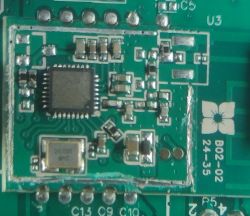Hi, there's a mesh feature on tasmota called Tasmesh which allows for esp devices to connect directly with ESPNOW
https://github.com/arendst/Tasmota/blob/development/info/xdrv_57_tasmesh.md
Requirement:
1) ESP32 - As broker
2) ESP8266 - As node
Add these lines to compile
Usage (enable in console or simply append to rule)
For broker (esp32/switch)
For nodes (esp8266/lights)
Right now I'm using it to control the lights with buttons detached from the relay, even if the router is offline with these rules enabled (example)
I was wondering if this can be implemented to openbeken?
https://github.com/arendst/Tasmota/blob/development/info/xdrv_57_tasmesh.md
Requirement:
1) ESP32 - As broker
2) ESP8266 - As node
Add these lines to compile
// -- ESP-NOW -------------------------------------
#define USE_TASMESH // Enable Tasmota Mesh using ESP-NOW (+11k code)
#define USE_TASMESH_HEARTBEAT // If enabled, the broker will detect when nodes come online and offline and send Birth and LWT messages over MQTT correspondingly
#define TASMESH_OFFLINE_DELAY 3 // Maximum number of seconds since the last heartbeat before the broker considers a node to be offlineUsage (enable in console or simply append to rule)
For broker (esp32/switch)
MeshBrokerFor nodes (esp8266/lights)
MeshNode AA:BB:CC:DD:EE:FFRight now I'm using it to control the lights with buttons detached from the relay, even if the router is offline with these rules enabled (example)
Rule1
on Power1#state do publish cmnd/lightbulb_group1/Power %value%
I was wondering if this can be implemented to openbeken?





